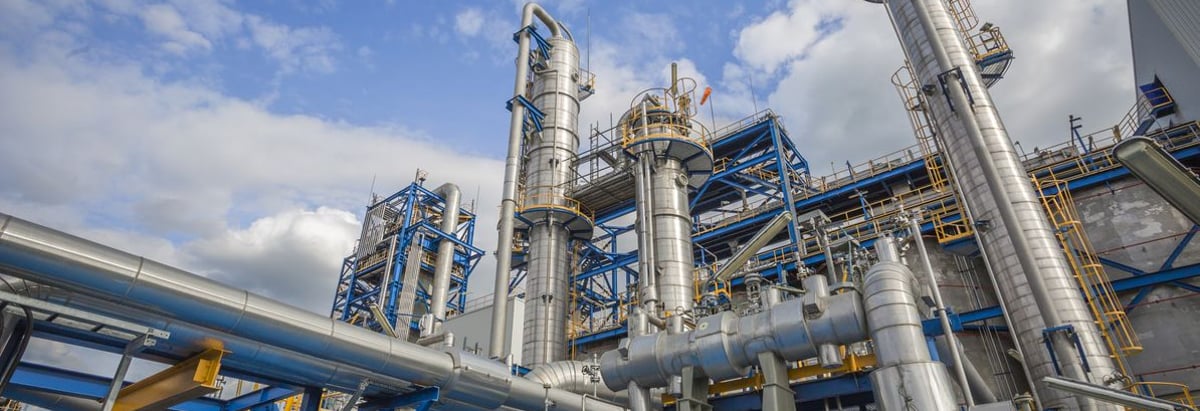- United States
- /
- Oil and Gas
- /
- NasdaqGS:CLNE
Health Check: How Prudently Does Clean Energy Fuels (NASDAQ:CLNE) Use Debt?

Some say volatility, rather than debt, is the best way to think about risk as an investor, but Warren Buffett famously said that 'Volatility is far from synonymous with risk.' When we think about how risky a company is, we always like to look at its use of debt, since debt overload can lead to ruin. We can see that Clean Energy Fuels Corp. (NASDAQ:CLNE) does use debt in its business. But should shareholders be worried about its use of debt?
What Risk Does Debt Bring?
Debt assists a business until the business has trouble paying it off, either with new capital or with free cash flow. If things get really bad, the lenders can take control of the business. However, a more usual (but still expensive) situation is where a company must dilute shareholders at a cheap share price simply to get debt under control. Of course, debt can be an important tool in businesses, particularly capital heavy businesses. The first thing to do when considering how much debt a business uses is to look at its cash and debt together.
View our latest analysis for Clean Energy Fuels
What Is Clean Energy Fuels's Debt?
You can click the graphic below for the historical numbers, but it shows that as of December 2023 Clean Energy Fuels had US$261.2m of debt, an increase on US$145.6m, over one year. But it also has US$263.1m in cash to offset that, meaning it has US$1.99m net cash.

How Healthy Is Clean Energy Fuels' Balance Sheet?
We can see from the most recent balance sheet that Clean Energy Fuels had liabilities of US$163.8m falling due within a year, and liabilities of US$362.0m due beyond that. Offsetting this, it had US$263.1m in cash and US$126.0m in receivables that were due within 12 months. So its liabilities total US$136.6m more than the combination of its cash and short-term receivables.
Clean Energy Fuels has a market capitalization of US$598.3m, so it could very likely raise cash to ameliorate its balance sheet, if the need arose. But it's clear that we should definitely closely examine whether it can manage its debt without dilution. Despite its noteworthy liabilities, Clean Energy Fuels boasts net cash, so it's fair to say it does not have a heavy debt load! When analysing debt levels, the balance sheet is the obvious place to start. But ultimately the future profitability of the business will decide if Clean Energy Fuels can strengthen its balance sheet over time. So if you want to see what the professionals think, you might find this free report on analyst profit forecasts to be interesting.
In the last year Clean Energy Fuels's revenue was pretty flat, and it made a negative EBIT. While that's not too bad, we'd prefer see growth.
So How Risky Is Clean Energy Fuels?
By their very nature companies that are losing money are more risky than those with a long history of profitability. And in the last year Clean Energy Fuels had an earnings before interest and tax (EBIT) loss, truth be told. Indeed, in that time it burnt through US$78m of cash and made a loss of US$99m. While this does make the company a bit risky, it's important to remember it has net cash of US$1.99m. That kitty means the company can keep spending for growth for at least two years, at current rates. Overall, we'd say the stock is a bit risky, and we're usually very cautious until we see positive free cash flow. There's no doubt that we learn most about debt from the balance sheet. However, not all investment risk resides within the balance sheet - far from it. For instance, we've identified 1 warning sign for Clean Energy Fuels that you should be aware of.
At the end of the day, it's often better to focus on companies that are free from net debt. You can access our special list of such companies (all with a track record of profit growth). It's free.
New: AI Stock Screener & Alerts
Our new AI Stock Screener scans the market every day to uncover opportunities.
• Dividend Powerhouses (3%+ Yield)
• Undervalued Small Caps with Insider Buying
• High growth Tech and AI Companies
Or build your own from over 50 metrics.
Have feedback on this article? Concerned about the content? Get in touch with us directly. Alternatively, email editorial-team (at) simplywallst.com.
This article by Simply Wall St is general in nature. We provide commentary based on historical data and analyst forecasts only using an unbiased methodology and our articles are not intended to be financial advice. It does not constitute a recommendation to buy or sell any stock, and does not take account of your objectives, or your financial situation. We aim to bring you long-term focused analysis driven by fundamental data. Note that our analysis may not factor in the latest price-sensitive company announcements or qualitative material. Simply Wall St has no position in any stocks mentioned.
About NasdaqGS:CLNE
Clean Energy Fuels
Provides natural gas as alternative fuels for vehicle fleets and related fueling solutions in the United States and Canada.
Adequate balance sheet and slightly overvalued.
Similar Companies
Market Insights
Community Narratives




